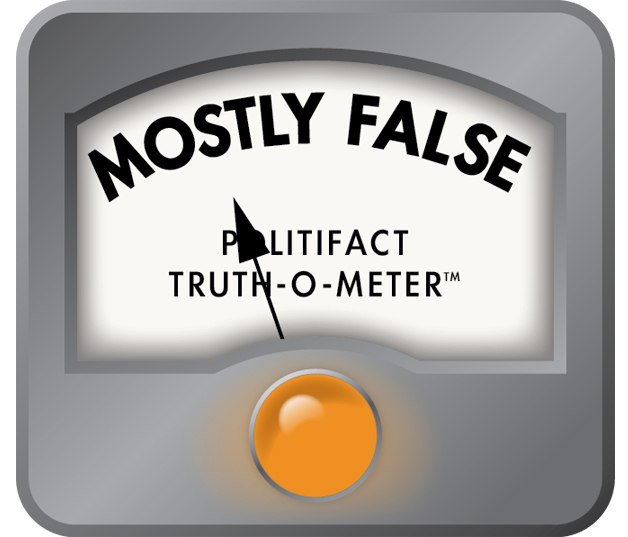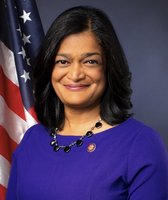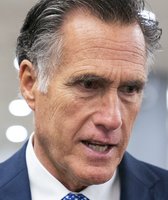Stand up for the facts!
Our only agenda is to publish the truth so you can be an informed participant in democracy.
We need your help.
I would like to contribute
The government may soon be back open for business, but the fight over "Dreamers" is far from over.
Lawmakers agreed to reopen the federal government Jan. 22 after three days of a government shutdown caused in part by a failure to agree on what should happen to young immigrants who entered the United States illegally as children and are at risk of deportation.
Democrats had demanded that a Dreamers bill be attached to a vote on government funding, but disagreed with Trump and Republican lawmakers over the inclusion of several provisions, such as funding for Trump’s promised border wall and changes to other immigration policies.
How did it get to this point?
Here’s a timeline of events, from Dreamers’ protections to Trump’s revocation to "s---hole" remarks.
Sign up for PolitiFact texts
June 2012: Obama administration creates Deferred Action for Childhood Arrivals
President Barack Obama in 2012 announced Deferred Action for Childhood Arrivals, or DACA, a program that would defer deportation for Dreamers who met certain criteria on a renewable two-year basis.
In his announcement, Obama emphasized his authority to set priorities for immigration enforcement until Congress approved a law that would formalize Dreamers’ immigration status. Lawmakers had been trying to get the DREAM Act (the acronym standing for Development, Relief, and Education for Alien Minors) passed since at least 2001.
"This is not a path to citizenship. It's not a permanent fix," Obama said on June 15, 2012.
"This is a temporary stopgap measure that lets us focus our resources wisely while giving a degree of relief and hope to talented, driven, patriotic young people."
August 2016: Candidate Trump promises to ‘immediately terminate’ DACA
Trump’s 10-point immigration plan said he would end DACA and another program directed at parents of U.S.-born children and lawful permanent residents.
"We will immediately terminate President Obama’s two illegal executive amnesties in which he defied federal law and the Constitution to give amnesty to approximately five million illegal immigrants, five million," Trump said.
Post-2016 election: Trump warms on DACA as president-elect
Trump seemed to soften his stance after the election. He told Time magazine that he wanted to work out something for Dreamers that would make people "happy and proud."
"They got brought here at a very young age, they've worked here, they've gone to school here. Some were good students. Some have wonderful jobs. And they're in never-never land because they don't know what's going to happen," Trump said in November.
At a February 2017 press conference, Trump said DACA was "a very, very difficult subject" for him and that he wanted to "deal with DACA with heart."
Sept. 5, 2017: Trump administration rescinds DACA
Attorney General Jeff Sessions said in a televised speech (we fact-checked it) that the Trump administration was rescinding the deferred-action program, potentially affecting 690,000 DACA beneficiaries.
As part of the phase-out, the administration planned to adjudicate, on a case-by-case basis, applications filed by Sept. 5 and reject any new requests filed after that date. Individuals who already had DACA with protection expiring by March 5, 2018, would be able to apply for renewal by Oct. 5, 2017.
"Congress, get ready to do your job - DACA!" Trump tweeted, adding that he would revisit the issue if legislators failed to pass a measure.
Jan. 9, 2018: Judge orders Trump to resume DACA renewals, hours after bipartisan White House meeting
Trump and a bipartisan group of lawmakers met at the White House to discuss a legislative fix for Dreamers, and news cameras were allowed inside to capture nearly an hour of the negotiations. (We fact-checked it.)
Trump even suggested a willingness to support broader changes to immigration law to help the estimated 11 million immigrants in the country illegally — at odds with his campaign rhetoric to deport them all.
"If we do this properly, DACA, you are not so far away from comprehensive immigration reform, and if you want to take it that further step, I'll take the heat," Trump said. "I don’t care. I don’t care. I’ll take all the heat you want to give me."
That evening, a federal judge ordered, pending final judgment, that the U.S. government keep DACA on the same terms and conditions that were in effect before the September rescission.
Jan. 11-15, 2018: After ‘s---hole’ remarks, Trump tweets ‘Durbin blew DACA’
Talks for a DACA deal took a step back after reports that Trump used vulgar language to describe countries from which he wants to limit legal immigration.
"Why are we having all these people from shithole countries come here?" Trump is reported as saying during a Jan. 11 meeting to strike a deal for Dreamers.
Sen. Dick Durbin, D-Ill., a supporter of the Dreamers, told reporters that Trump "said things that were hate-filled, vile, and racist. He used those words repeatedly."
Trump tweeted on Jan. 15: "Senator Dicky Durbin totally misrepresented what was said at the DACA meeting. Deals can’t get made when there is no trust! Durbin blew DACA and is hurting our Military."
Jan. 16, 2018: Trump team says it will appeal to U.S. Supreme Court
The U.S. Justice Department said it would ask the U.S. Supreme Court to review the federal judge’s order that the administration resume accepting DACA renewal applications.
The department also said it had appealed the case to the 9th U.S. Circuit Court of Appeals.
Jan. 20, 2018: Federal government enters shutdown
The fate of immigrants who came to the country illegally as children became intertwined with the expiration of a short-term measure funding the government at the close of Trump’s first year.
Senate Democrats demanded a solution for the Dreamers in exchange for their votes on another bill that would keep the government running. When the Senate took up a House measure that excluded a deal for Dreamers, many Democrats rejected it. With a failed bill, the government entered its first shutdown since 2013.
Here’s everything you need to know about a government shutdown, including its impact on the military.
Jan. 22, 2018: Lawmakers vote to reopen government
In a procedural vote, Senators voted 81-18 to end the shutdown.
Senate Minority Leader Chuck Schumer, of New York, said there was commitment from Republican leadership that if an agreement is not reached by Feb. 8, the Senate would "immediately proceed" to consider DACA-related legislation.
Our Sources
PolitiFact, Trump-O-Meter: Build a wall, and make Mexico pay for it, Jan. 29, 2018
PolitiFact, Did Obama say he didn't have the right to issue DACA?, Jan. 9, 2018
Time, Here's What President Trump Has Said About DACA in the Past, Sept. 5, 2017
PolitiFact, Fact-checking Attorney General Jeff Sessions on the DACA immigration program, Sept. 5, 2018
PolitiFact, What happened at the immigration meeting between Trump, bipartisan lawmakers, Jan. 9, 2018
PolitiFact, Donald Trump’s ‘s---hole countries’ remark and its policy history, Jan. 12, 2018
Twitter @realdonaldtrump tweet, Jan. 15, 2018, tweet, tweet, Sept. 5, 2017
The Washington Post, Justice will ask Supreme Court to intervene, allow Trump administration to end DACA, Jan. 16, 2018
PolitiFact, Everything you need to know about a government shutdown, posted Jan. 19, 2018, updated Jan. 20 2018
Twitter @SenSchumer tweet, Jan. 22, 2018
The New York Times, Senate Votes Overwhelmingly to End Government Shutdown, Jan. 22, 2018
PolitiFact, Trump-O-Meter: Remove all undocumented immigrants, last updated Jan. 3, 2018
The New York Times, Transcript of Donald Trump’s Immigration Speech, Sept. 1, 2016
PolitiFact, PolitiFact Sheet: Donald Trump’s immigration plan, Nov. 9, 2016
PolitiFact, Trump-O-Meter: Terminate Barack Obama's immigration executive orders 'immediately', Jan. 10, 2018


 PolitiFact Rating:
PolitiFact Rating: 









































